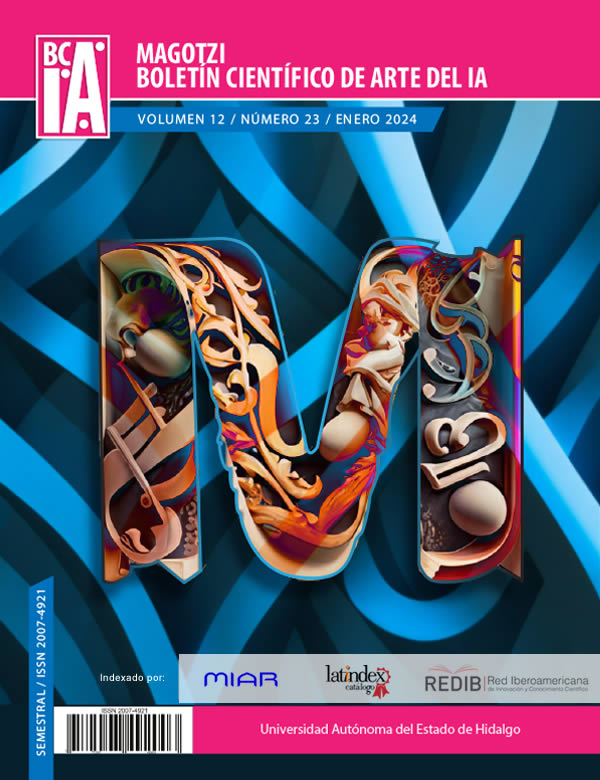Vindication of Sensory Subjectivity against Artificial Intelligence in Artistic Creation
Abstract
In this essay it is shown that the art that is produced using artificial intelligence is a technological fallacy since it cannot overcome, so far, the phenomenological conditions of the body - subject and as a unit. This, is detonating and fundamental part of the artistic production, besides the robot artists and the web pages where AI Art is produced, have not either overcome the epistemic displacements that the artists have been developing since the appearance of the avant-gardes. The concepts of artificial consciousness and self-consciousness are discussed in reference to the phenomenology of Maurice Merleau - Ponty. Finally, we conclude how these characteristics of contemporary art are reconfiguring postmodern art, resulting in post-contemporary art.
Downloads
References
Ai-darobot (2019). El primer robot artista humanoide ultrarrealista del mundo. Ai-darobot. https://www.ai-darobot.com/
Arias, A. (2011). Neurociencia de la conciencia: Introducción al marco teórico de un clásico contemporáneo. Ciencia Cognitiva, 5 (1), 22-24.
Bense, M. (1969). Estética. Nueva Visión.
Bostrom, N., (2003), “Are you living in a computer simulation?”, Philosophical Quar- terly, vol. 53, n. 211, pp. 243-255. https://www.simulation-argument.com/simulation.pdf
Edelman, G., y Tononi, G. (2005). El universo de la conciencia. Cómo la materia se convierte en imaginación. Crítica.
Kosuth, J. (1991). Art after philosophy and after: Collected writings. MIT Press.
Kurzweil, R. (2013). La Singularidad Está Cerca: Cuando los Humanos Transcendamos la Biología. Lola Books.
McCarthy, J., Minisky, M. L., Rochester, N. y Shannon, C. E. (1955). A proposal for the Dartmouth summer research project on artificial intelligence. En R. Chrisley (Ed.), Artificial Intelligence, critical concepts (pp. 44-53). Routledge.
McFadden, J. (2020). Integrating information in the brain’s EM field: the cemi field theory of consciousness. Neuroscience of consciousness , 2020 (1), https://doi.org/10.1093/nc/niaa016
Merleau-Ponty, M. (1993). Fenomenología de la percepción. Planeta mexicana.
Nagel, T. (1974). What Is It Like to Be a Bat? The Philosophical Review, 83(4), 435–450. https://doi.org/10.2307/2183914
Reichardt, J. (1968). Cybernetic Serendipity, the computer and the arts. Stuido International.
Szeemann, H. (2006). Live in Your Head: When Attitudes Become Form: Works, Concepts, Processes, Situations, Information. Suiza: Kunsthalle Bern.
Tapia, S. (2023). El manifesto del Arte Post- contemporáneo en Resistencia. Revista.miapcr-museum. https://revista.miapcr-museum.ar/2023/04/el-arte-post-contemporaneo-el-arte.html
Copyright (c) 2023 Mario Alberto Bracamonte Ocaña

This work is licensed under a Creative Commons Attribution-NonCommercial-NoDerivatives 4.0 International License.











